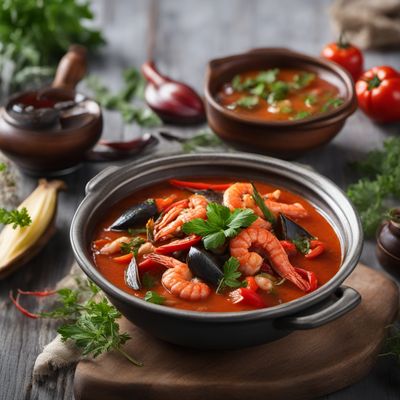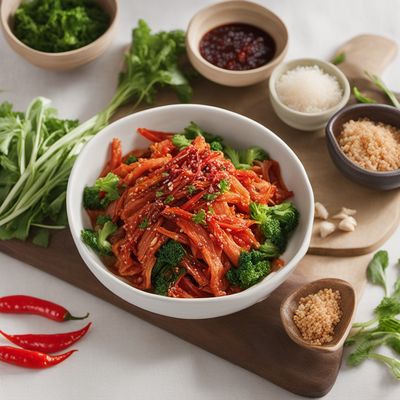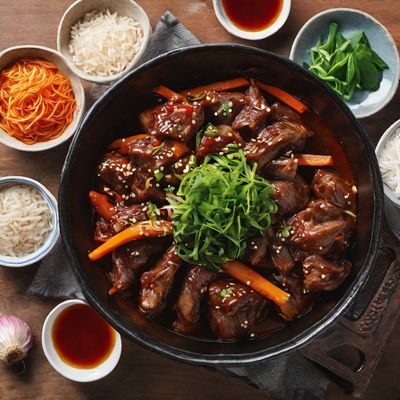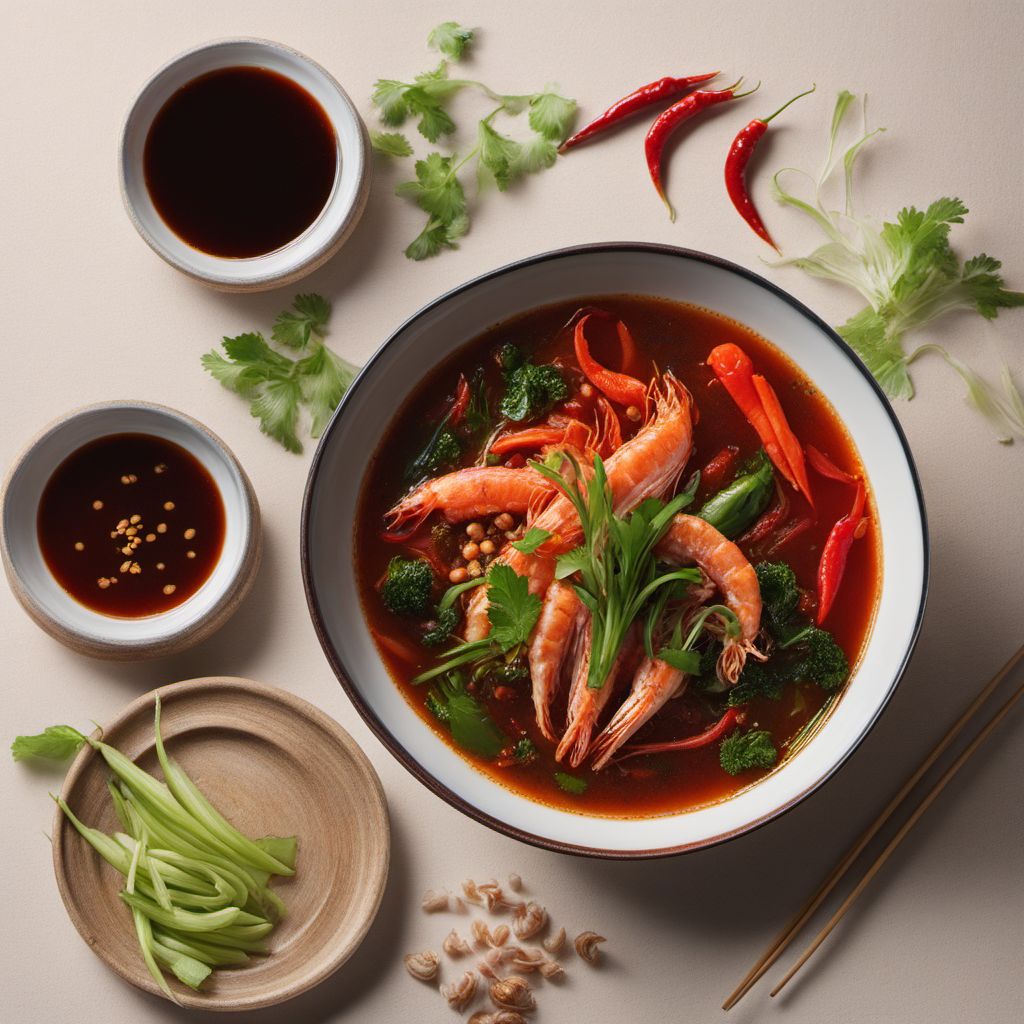
Recipe
Spicy Seafood Soup with Fermented Skate, Honghap Tang
Fiery Delight: A Spicy Seafood Soup Infused with the Essence of Fermented Skate
4.7 out of 5
Indulge in the vibrant flavors of Korean cuisine with this authentic recipe for Honghap Tang. This spicy seafood soup, featuring the unique addition of fermented skate, is a beloved dish in Korean culture, known for its bold and invigorating taste.
Metadata
Preparation time
20 minutes
Cooking time
20 minutes
Total time
40 minutes
Yields
4 servings
Preparation difficulty
Medium
Suitable for
Pescatarian, Gluten-free, Dairy-free, Low-carb, Low-calorie
Allergens
Seafood, Soy
Not suitable for
Vegan, Vegetarian, Paleo, Keto, Nut-free
Ingredients
-
500g (1.1 lb) assorted seafood (shrimp, clams, squid, etc.) 500g (1.1 lb) assorted seafood (shrimp, clams, squid, etc.)
-
200g (7 oz) fermented skate, cleaned and sliced 200g (7 oz) fermented skate, cleaned and sliced
-
1 onion, sliced 1 onion, sliced
-
4 cloves of garlic, minced 4 cloves of garlic, minced
-
1 thumb-sized ginger, sliced 1 thumb-sized ginger, sliced
-
2 green onions, chopped 2 green onions, chopped
-
1 red chili pepper, sliced 1 red chili pepper, sliced
-
1 green chili pepper, sliced 1 green chili pepper, sliced
-
1 tablespoon gochugaru (Korean red pepper flakes) 1 tablespoon gochugaru (Korean red pepper flakes)
-
1 tablespoon gochujang (Korean red pepper paste) 1 tablespoon gochujang (Korean red pepper paste)
-
1 tablespoon soy sauce 1 tablespoon soy sauce
-
1 tablespoon fish sauce 1 tablespoon fish sauce
-
1 tablespoon sesame oil 1 tablespoon sesame oil
-
1 tablespoon vegetable oil 1 tablespoon vegetable oil
-
6 cups (1.4 liters) water 6 cups (1.4 liters) water
-
Salt and pepper to taste Salt and pepper to taste
Nutrition
- Calories (kcal / KJ): 250 kcal / 1046 KJ
- Fat (total, saturated): 8g, 1g
- Carbohydrates (total, sugars): 10g, 3g
- Protein: 35g
- Fiber: 2g
- Salt: 2g
Preparation
-
1.In a large pot, heat vegetable oil over medium heat. Add minced garlic, ginger, and sliced onion. Sauté until fragrant.
-
2.Add gochugaru and gochujang to the pot. Stir well to combine with the aromatics.
-
3.Add water to the pot and bring it to a boil.
-
4.Once the broth is boiling, add the fermented skate slices and simmer for 10 minutes to allow the flavors to meld.
-
5.Add the assorted seafood to the pot and cook for an additional 5 minutes or until the seafood is cooked through.
-
6.Stir in soy sauce, fish sauce, sesame oil, green onions, red chili pepper, and green chili pepper. Season with salt and pepper to taste.
-
7.Simmer for another 2-3 minutes to let the flavors meld together.
-
8.Serve the Honghap Tang hot in individual bowls, garnished with additional green onions and chili slices if desired.
Treat your ingredients with care...
- Fermented skate — Make sure to clean the skate thoroughly before slicing it. This will help remove any excess odor and ensure a clean taste in the soup.
- Gochugaru (Korean red pepper flakes) — Adjust the amount according to your spice preference. Add more for a spicier soup or reduce the quantity for a milder version.
- Gochujang (Korean red pepper paste) — Look for a high-quality gochujang to enhance the flavor of the soup. If unavailable, you can substitute it with a mixture of miso paste and chili powder.
Tips & Tricks
- For a heartier version, you can add tofu or mushrooms to the soup.
- Adjust the spiciness by adding more or less gochugaru and gochujang.
- Serve the Honghap Tang with a side of steamed rice to balance the flavors.
- If you prefer a clearer broth, strain the soup before serving.
- Leftovers can be stored in the refrigerator for up to 2 days. The flavors will continue to develop, making it even more delicious the next day.
Serving advice
Honghap Tang is best enjoyed as a main course, served with a bowl of steamed rice. Garnish each bowl with additional green onions and chili slices for added freshness and visual appeal.
Presentation advice
To present the Honghap Tang beautifully, ladle the soup into individual bowls, making sure to distribute the seafood and vegetables evenly. Garnish with a sprinkle of chopped green onions and a few slices of red and green chili peppers. Serve the soup hot, allowing the vibrant colors and enticing aroma to captivate your guests.
More recipes...
For Honghap tang
More Korean cuisine dishes » Browse all

Hobakjeon
Zucchini Pancake
Hobakjeon is a Korean dish made with sliced pumpkin that is coated in a flour and egg batter and pan-fried.

Dassima-bokkeum
Seaweed Stir-Fry
Dassima-bokkeum, also known as stir-fried kelp, is a Korean side dish. It is made with kelp, garlic, and a savory sauce.
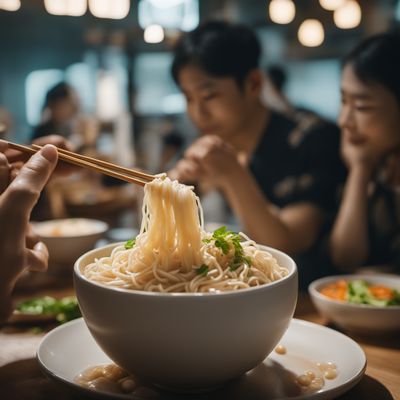
Kongguksu
Cold Soy Milk Noodles
Kongguksu is a Korean dish made with cold soybean soup and noodles. It is a popular summer dish.
